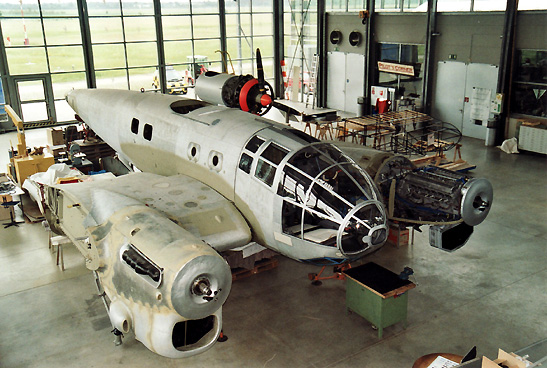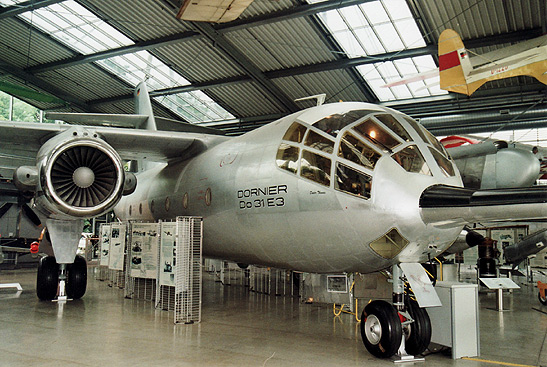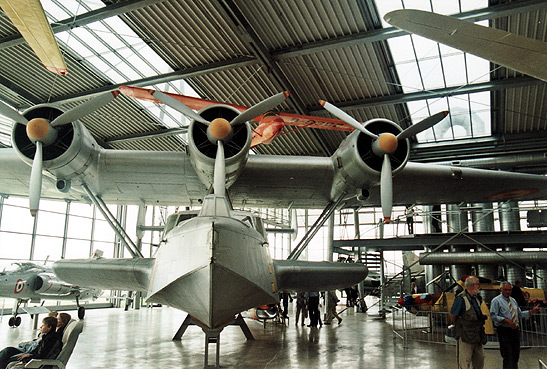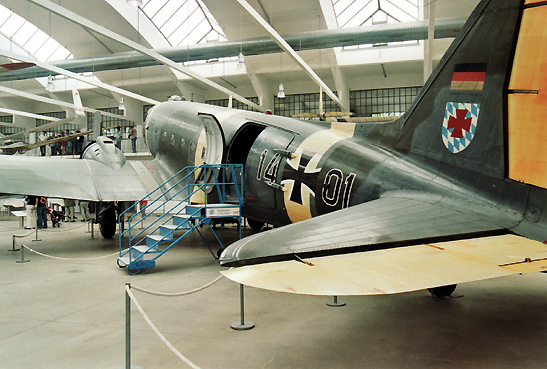|
Is THIS The Most Intriguing
Aviation Museum in Germany?
Words and Pictures by John Clayton
 assing by in your car there is no indication this had been something
special. It is, after all, just a field that appeared to stretch into
infinity. But that’s exactly what made it so appealing to the Luftwaffe
in WW2. I was with a group of American travel media touring some of
the significant places in Germany with a connection to transportation,
and this was our first glimpse of the Oberschleissheim Airfield –
the oldest still existing such place in all of Germany.
assing by in your car there is no indication this had been something
special. It is, after all, just a field that appeared to stretch into
infinity. But that’s exactly what made it so appealing to the Luftwaffe
in WW2. I was with a group of American travel media touring some of
the significant places in Germany with a connection to transportation,
and this was our first glimpse of the Oberschleissheim Airfield –
the oldest still existing such place in all of Germany.
In the past 40 years I’ve been to Germany countless
times, and I was always intrigued by how infrequently mention of WW2
came up in a conversation. Unless I’d gone to this airfield’s
website, I’d never have known that this was – from 1933 to
1945 – one of the key airbases for the Luftwaffe. Soon after taking
power in 1933 the Nazis accelerated the utilization of the airfield
for the training of fighter and bomber crews, and no less than the exalted
personalities of Erhard Milch, the Secretary for Aviation in Hitler’s
hierarchy, and fighter ace Ernst Udet, came to see the fighter school
on November the 11th, 1935. It was so important in the last part of
WW2, that on April 25th, 1945 allied bombers put it out of action by
dumping a huge load of bombs to crater the airfield’s runways –
and thus making it unusable.
So, what better place then here, to install one of the
most interesting aviation museums in Germany? After the war the US Army
used it as a base for helicopters, and in 1968 the German Army also
made use of its facilities. Closing in 1981, the airfield and its surrounding
buildings began to fall into disrepair. But, thank goodness, in 1988
some far sighted officials saw its historic value and decided to make
it into a part of the (famous) Deutches Museum – aviation section,
and in 1992 it opened as just that – and believe me, its absolutely
fascinating. With over 60 aircraft on display, including helicopters,
VTOL, jets, hang gliders, seaplanes, flight simulators, engines etc,
it is an aviation aficionado’s heaven.
Fitting into that category like a well worn glove, I
was (and hey, still am!) intrigued by everything I saw, and when asked
which aircraft I found the most riveting, my answer’s always the
same. “There are four. A Fiesler Storch, a unique DC3, a VTOL aircraft,
and a flying boat.” But without doubt, the most spellbinding is
a fifth aircraft. I remember, as a kid growing up in London during WW2,
being mesmerized by a German bomber called the Heinkel 111. Its shape
was unique, and as a bomber, it terrified thousands of Brits during
its many forays over the UK, especially those over London. Which is
why it was eerie to see one up close, and very personal.
|

No wings, but this is the partially restored
classic Heinkel 111.
It had been built, under license, to Spain in
1950, and was sold to the Spanish Air Force. When they’d
finished with it in the early 60s, it began to rapidly deteriorate,
and in 1968 it was what’s called “written off”
as an active aircraft. But then in 1968 it was born again for
use in a British movie called "The Battle Of Britain,"
and was refurbished and repainted as a Nazi bomber. After that
it looked as if it might disappear altogether, but again luck
stepped in, and in 1977 it was purchased by the Deutches Museum
and put into storage. In 2000, it was decided to bring it back
to its full Spanish Air Force glory, and a huge restoration project
began.
|
|

The classic Fiesler Storch – one of the
great German military aircraft of WW2.
Any WW2 aficionado can tell you that any time
the Germans needed any sort of battlefield overview of how things
stood, they used a marvelous aircraft called The Fielser Storch.
Well this museum has one, and although its “rebirth”
involved using pieces from other aircraft of the same type, it’s
still mesmerizing to see a living copy of this classic airplane.
|
|

Way ahead of its time, this is the unique
looking Dornier 31 – the first German VTOL aircraft. Too
bad they never pursued this clever technology.
Then there’s the Dornier 31 (what images
that name conjures up!!!!) – it was the world’s only
VTOL (Vertical Take Off and Landing) fixed wing transport built
by the Germans in 1967 for research and flight testing, and only
2 were built, after which the concept “died,” and the
aircraft were forgotten. Given the technical expertise required
to build such a complicated aircraft, I thought it was inconceivable
that no one back then had the foresight to see what an innovative
design this was, and I could not understand why work was halted.
Even more distressing to any airplane buff, is that after it was
decided to NOT move forward with its revolutionary designs, it
stood out in the open on Museum Island on the River Isar, and
suffered dreadfully for 20 incredible years from the inclement
weather. It was eventually disassembled (and restored) and is
now on display inside this amazing museum in all its original
glory.
|
|

Some might mistake this for a Catalina. But
no, it’s the unique German Dornier Do 24-T-3 flying boat.
When you first see the Museum's Dornier Do 24
T-3, you're convinced that what you see before you is a classic
Catalina flying boat --- but no, this is a German seaplane that
played a vital role in WW2 for the Nazis. It was used as a long
range reconnaissance aircraft, as well as a troop transport and
was, of course, used extensively in air sea rescues. This one
flew until 1969 in the service of Spain, and is yet again one
of the many joys of this aviation Mecca.
|
|

A Luftwaffe DC3.
Finally the DC 3. Here’s another classic
aircraft that one instantly associates with “things American,”
and so to see it in the colors of the modern German Luftwaffe
came as a shock – at least to me. This DC 3 was first used
by the British RAF for use as a luxury transport for VIP’s,
and then flew with the German Air force --- and it’s still
in pristine condition.
|
For anyone that has even the slightest interest in aviation,
this museum is a must see place, and is easily accessible from nearby
Munich. You get there by S-Bahn train service route S1 to the Freising
Airport and Oberschiessheim station. See http://www.deutsches-museum.de/en/
flugwerft/information/ as well as contacting the German National
Tourist office at www.cometogermany.com
--- I’ve traveled to many of the world's great aviation museums,
and I can honestly tell you THIS one is truly worth a visit -- especially
for any WW2 buff.
|




